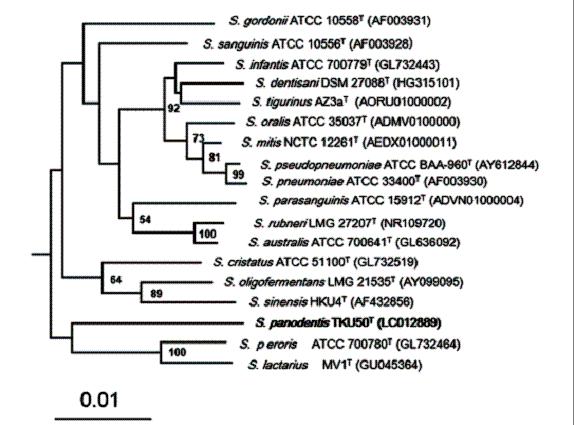



|
TOPICS BONOBO Chimpanzee "Ai" Crania photos Itani Jun'ichiro archives Open datasets for behavioral analysis Guidelines for Care and Use of Nonhuman Primates(pdf) Study material catalogue/database Guideline for field research of non-human primates 2019(pdf) Primate Genome DB 
Primate Research Institute, Kyoto University Copyright (c) |
Japanese Streptococcus panodentis sp. nov., from the oral cavities of chimpanzees
Masaaki Okamoto, Susumu Imai, Mayu Miyanohara, Wataru Saito, Yasuko
Momoi, Yoshiaki Nomura, Tomoko Ikawa, Takumi Ogawa, Takako
Miyabe-Nishiwaki, Akihisa Kaneko, Akino Watanabe, Shohei Watanabe, Misato Hayashi, Masaki Tomonaga and Nobuhiro Hanada
Abstract
Three strains TKU9, TKU49 and TKU50T, were isolated from the oral cavities of chimpanzees (Pan troglodytes). The isolates were all gram-positive, facultative anaerobic cocci that lacked catalase activity. Analysis of partial 16S rRNA gene sequences showed that the most closely related species was Streptococcus infantis (96.7%). The next most closely related species to the isolates were S. rubneri, S. mitis, S. peroris and S. australis (96.6 to 96.4%). Based on the rpoB and gyrB gene sequences, TKU 50T was clustered with other member of the mitis group. Enzyme activity and sugar fermentation patterns differentiated this novel bacterium from other members of the mitis group streptococci. The DNA GþC content of strain TKU50T was 46.7 mol%, which is the highest reported value for members of the mitis group (40-46 mol%). On the basis of the phenotypic characterization, partial 16S rRNA gene and sequences data for two housekeeping gene (gyrB and rpoB), we propose a novel taxa, S. panodentis for TKU 50T (type strain=CM 30579T=DSM 29921T), for these newly described isolates.  Bibliographic information
Microbiology and Immunology, 2015, 59: 526-532. doi: 10.1111/1348-0421.12290 2015/09/14 Primate Research Institute
|